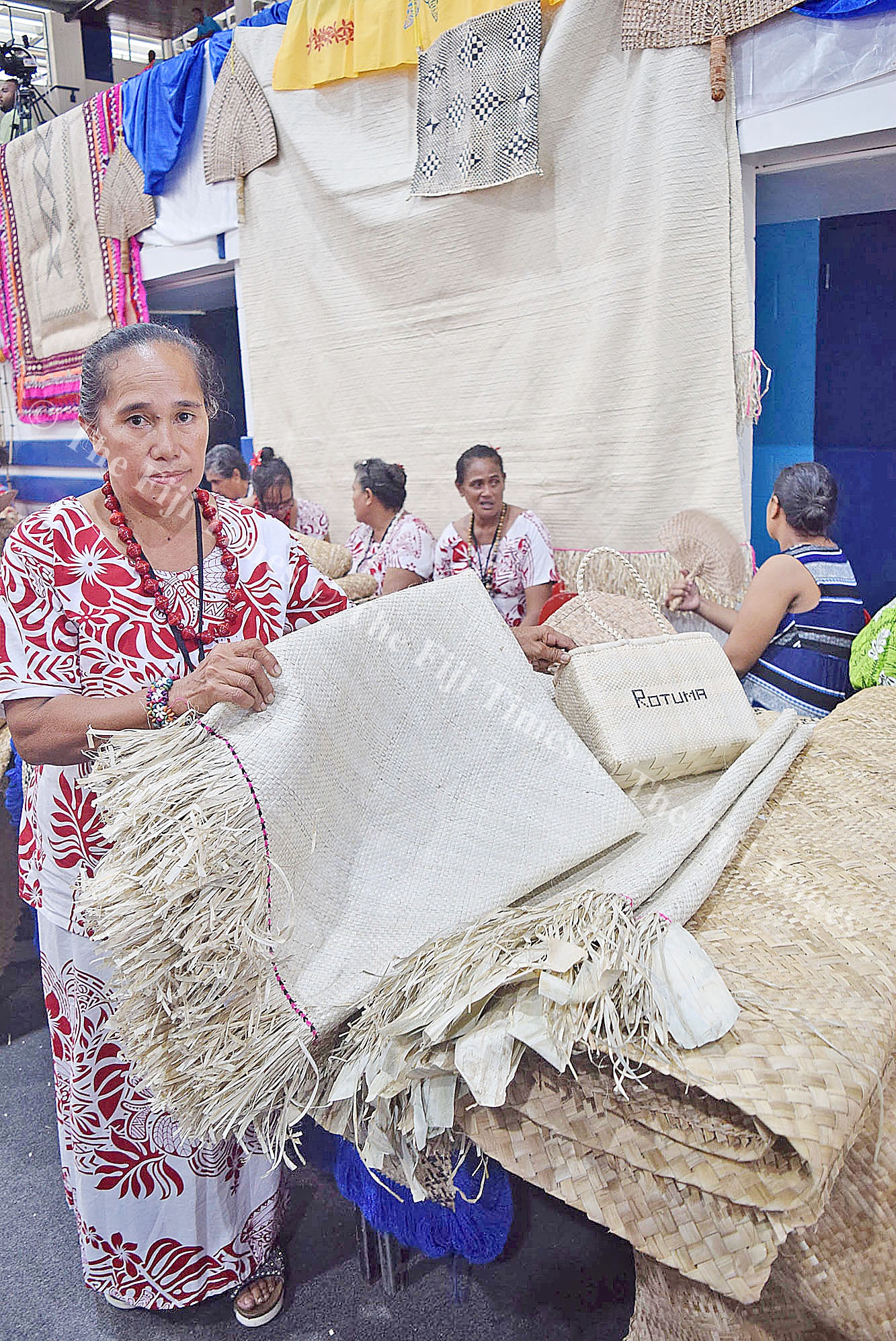WHAT made Elsie George easily noticeable during the National Women’s Expo held last week at the FMF Gymnasium was her huge smile, vibrant character and of course bright red and white dress with matching earrings and necklace.
Elsie is from Tuakoi Village in Rotuma and is one of the 12 women who were selected by the Ministry of Women to be part of the annual Women’s Expo.
Apart from her bubbly personality, Elsie has a skill that most Rotuman women living on the island share and have sustained for many years.
She is a Rotuman traditional mat weaver with the skills to create prized possessions of Rotuman culture, the Apei (white mats) and Eap ma on faua (brown mats) that are approximately 12 feet by 5 feet in length.
Elsie shares that her knowledge of traditional weaving was passed down to her by her late mother Raume Aisake who taught Elsie from a very young age.
“Not only did I learn how to weave from my mother, I learnt it from women from the village, sisters, friends and anyone who was keen to teach me,” she said.
Weaving has been a source of income for Elsie and her family and she is grateful for the opportunity to be able to showcase her crafts at the Women’s Expo for four years now.
“The most difficult mat for us to weave is the Apei (white ceremonial mat) because of the different processes that need to be done and its significance to our culture,” she said.
An Apei according to Elsie is made of green pandanus leaves that are dipped in boiling water and coiled. When the leaves are uncoiled, the back of the leaves are then removed by sharp shell that women use as a scraping tool.
“After the leaves are scraped with the sharp shell, the shiny parts of the leaves are then dipped in the sea for a day, the leaves are then placed in a tub of fresh water so seawater can be removed overnight,” she said.
“When taken from the tub, it is then coiled and with the two ends pinched together is shaken down into a curly spiral to keep them from shrinking. From there the process continues with drying them in the sun which is an important process.”
She said weaving an Apei was simple but the process to get the leaves ready for weaving was hard.
“Even though it’s hard work it pays well to weave one. We get orders from overseas for mats and some can cost $1000 to $6000 depending on the size which is good money for us,” she said.
“It’s a prized possession for Rotumans because it’s a ceremonial mat so it’s quite expensive when sold.
“It’s a good source of livelihood for women in the outer islands.”
She said she also weaved star mats and fans which were sold in Fiji and overseas.
Elsie, upon her return to Rotuma after the Women’s Expo, hopes to motivate and help the young women in Rotuma to know the importance of weaving and how they can earn significant amount of money from traditional weaving skills.




